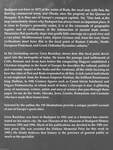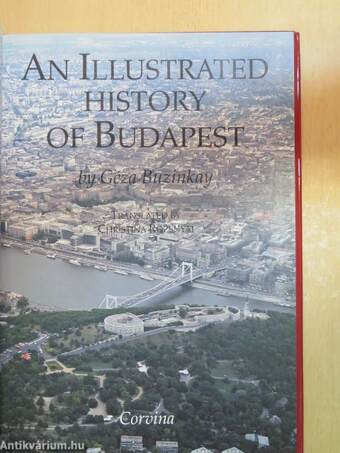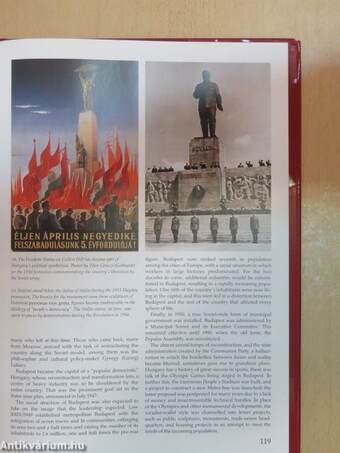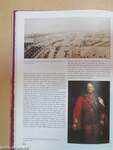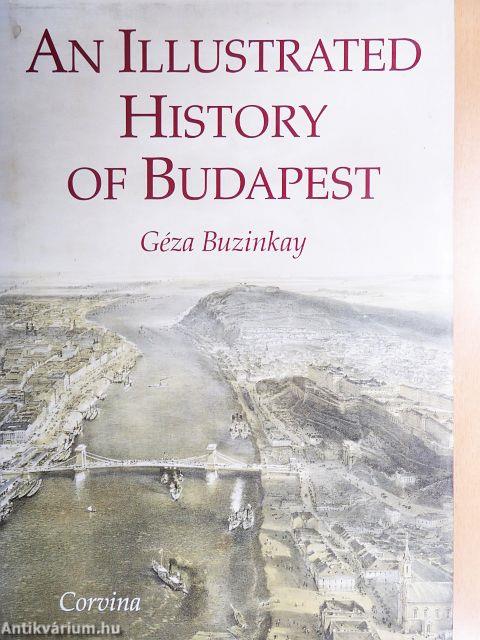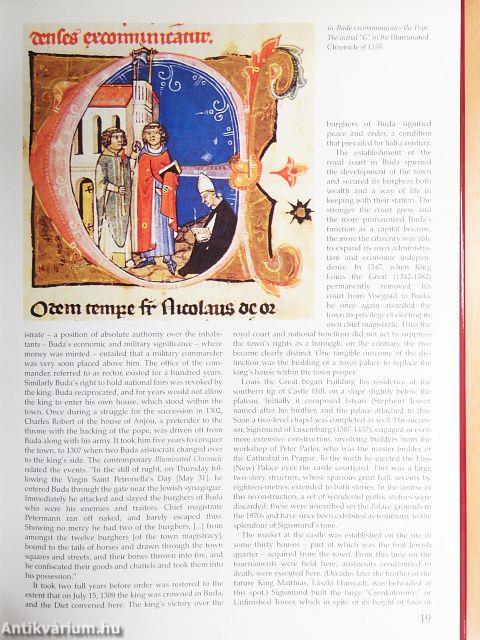1.118.317
kiadvánnyal nyújtjuk Magyarország legnagyobb antikvár könyv-kínálatát
An Illustrated History of Budapest
Budapest képes története
| Kiadó: | Corvina |
|---|---|
| Kiadás helye: | Budapest |
| Kiadás éve: | |
| Kötés típusa: | Vászon |
| Oldalszám: | 130 oldal |
| Sorozatcím: | |
| Kötetszám: | |
| Nyelv: | Angol |
| Méret: | 32 cm x 23 cm |
| ISBN: | 963-13-4474-6 |
| Megjegyzés: | Színes és fekete-fehér fotókkal, reprodukciókkal. |
naponta értesítjük a beérkező friss
kiadványokról
naponta értesítjük a beérkező friss
kiadványokról
Fülszöveg
Budapest was born in 1872 of the unión of Buda, the royal seat, with Pest, the thriving commercial town, and Óbuda, once the property of the Queens of Hungary. It is thus one of Europe's youngest capitals. Yet, "One look at the map immediately shows why Budapest has always been an important place. It is close to Europe's geometric centre, it is at the crossroads of geographic regions and of civilisations, at the intersection of ancient trade routes. Mountains that gradually slope into gentle hills converge on a great river and a vast plain. Mediterranean Latin, Alpine Germán and, from the east, Slavic civilisations meet here: this is the focal point of Román Catholic, NorthEuropean Protestant, and Greek Orthodox/Byzantine cultures." In his fascinating survey Géza Buzinkay shows how this focal point developed into the metropolis of today. He traces the passage (and settlement) of Celts, Romans and Avars here before the conquering Magyars established a Christian kingdom in the heart... TovábbFülszöveg
Budapest was born in 1872 of the unión of Buda, the royal seat, with Pest, the thriving commercial town, and Óbuda, once the property of the Queens of Hungary. It is thus one of Europe's youngest capitals. Yet, "One look at the map immediately shows why Budapest has always been an important place. It is close to Europe's geometric centre, it is at the crossroads of geographic regions and of civilisations, at the intersection of ancient trade routes. Mountains that gradually slope into gentle hills converge on a great river and a vast plain. Mediterranean Latin, Alpine Germán and, from the east, Slavic civilisations meet here: this is the focal point of Román Catholic, NorthEuropean Protestant, and Greek Orthodox/Byzantine cultures." In his fascinating survey Géza Buzinkay shows how this focal point developed into the metropolis of today. He traces the passage (and settlement) of Celts, Romans and Avars here before the conquering Magyars established a Christian kingdom in the heart of Europe; he describes the cultural, political and economic impact of the Turks and the Austrians, all the while focusing on how the cities of Pest and Buda responded to all this. A rich cast of individuals is not neglected: from the Román Emperor Hadrian, the brilliant Renaissance king Mathias, to 19th Century figures such as Count István Széchenyi and Frigyes Podmaniczky, to whom much of today's cityscape is due. A glittering array of musicians, writers, artists and men of science alsó pass through these pages. So too do the Serbs, Slovaks, Jews, Greeks, Romanians and Germans who have made their homes here. Selected by the author, the 150 illustrations provide a unique parallel account of one of Europe's great cities. Géza Buzinkay was born in Budapest in 1941 and as a histórián has concentrated on his native city. He was Director of the Museum of Budapest History between 1992 and 1996. Much of his publications are devoted to the 19th century press. (He was awarded the Pulitzer Memóriái Prize for this work in 1995.) He firmly believes that history is the province of generál public as much as the speciálist. VisszaTémakörök
- Idegennyelv > Idegennyelvű könyvek > Angol > Művészetek > Fotóművészet
- Idegennyelv > Idegennyelvű könyvek > Angol > Művelődéstörténet
- Idegennyelv > Idegennyelvű könyvek > Angol > Helytörténet
- Művelődéstörténet > Kultúra > Története
- Helytörténet > Magyarország > Városok > Budapest
- Helytörténet > Honismeret > Települési > Városi
- Művészetek > Fotóművészet > Albumok > Magyar > Budapest
- Művészetek > Fotóművészet > Albumok > Tematikus
- Művészetek > Fotóművészet > Idegen nyelv > Angol
- Művészetek > Fotóművészet > Témái > Városok > Magyar







